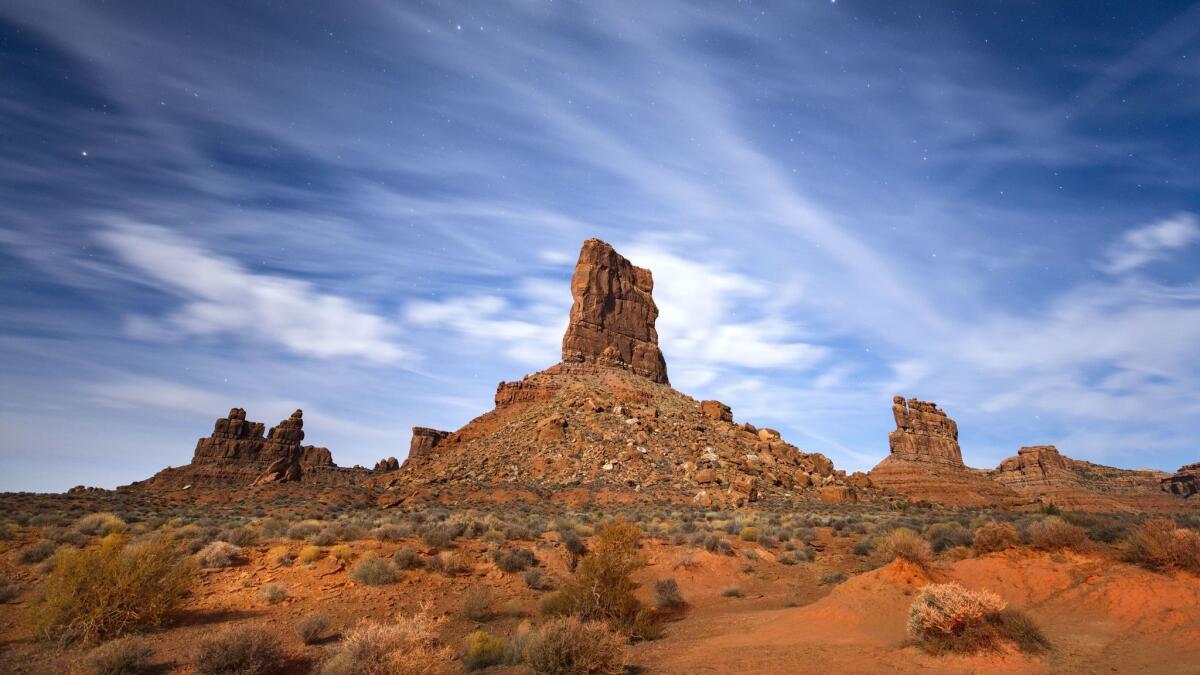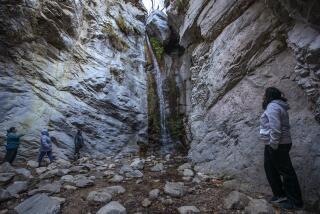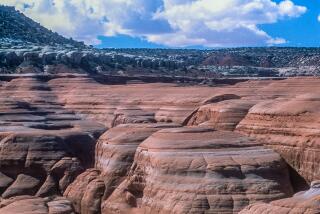Op-Ed: The Trump administration is redefining the ‘public’ in ‘public lands’

The Trump administration, aided by a willing but slim majority in Congress, began to comprehensively dismantle public lands protections in 2017. The regulatory results were fairly astonishing. They amount to an unprecedented rollback of conservation norms that date back to Theodore Roosevelt, who made the preservation of natural resources national policy more than a century ago.
Trump’s disassembling of public lands protections include drastically slashing the size of national monuments in Utah, opening up the Arctic National Wildlife Refuge to oil drilling, jettisoning protections for sage grouse throughout vast areas of the arid West and taking a headlong dive into increased fossil-fuel production. The latter involves ending moratoria on coal and oil-and-gas leasing, terminating methane emission controls, scuttling hydraulic fracturing regulations and eviscerating federal consideration of the long-term costs of carbon emissions on the planet’s environment.
Americans have lived through public land scandals such as the Teapot Dome affair in the 1920s, in which bribery by oil companies sent the secretary of Interior to prison. In the 1980s, the Reagan administration’s secretary of the Interior privatized federal coal in Wyoming’s Powder River Basin without trying to obtain fair market value for it. But those giveaways pale before what is going on now.
The legal grounds for the Trump turnaround in national policy will be tested in the courts over the next few years. In some cases, the administration may be unable to show a rational reason for changes in course that were conscientiously vetted and adopted just a few years ago. But the politics of this abrupt about-face should be debated now, as the Trump public lands revolution takes effect.
The effect of the Trump revolution is to redefine the “public” in public lands, or at least the public that matters.
Do the American people — owners of the scaled-back Utah monuments as well as the surrounding lands — favor removing Native archaeological and sacred sites from those areas without a clear cost-benefit accounting of the land’s value for drilling or mining? Do the people favor oil drilling in the Arctic refuge — after 40 years of wildlife protection — when there is no need for new domestic supplies of oil? How about ending sage grouse protections that were agreed on by all stakeholders, including the federal government, after years of study and negotiation?
No one in the administration seems to care about such questions. Why not? And why would lands owned by all Americans be threatened by a government nominally committed to protecting the rights of all?
There’s plenty of evidence that well-organized and well-funded special interest groups — such as oil and gas companies, mining concerns and public land grazers — are much more likely to succeed at persuading regulators of the wisdom of their claims than are the members of the general public.
The Trump rollbacks in public lands protections are highly unpopular among most Americans. The latest “State of the Rockies” poll, conducted by Colorado College, found that in the seven mountain states, voters prefer safeguarding air, water, wildlife and recreation on public lands over mining and drilling by a massive 3-1 margin. Moreover, as Secretary of the Interior Ryan Zinke admitted, almost all of the 2.4 million public comments submitted to Washington during the administration’s “review” of national monuments favored no change in their size or status.
No matter: The effect of the Trump revolution is to redefine the “public” in public lands, or at least the public that matters. Those with a financial stake in mining, grazing and logging now enjoy preferred status.
The shift is especially clear in two budget proposals. Under Trump, the Park Service has suggested raising entry fees at the most popular national parks from $25 or $30 to $70 per car. At the same time, congressional Republicans aim to substantially cut the Park Service budget. Meanwhile, the administration has resisted increasing royalties on public-lands fossil-fuel leases and has rejected charging fair-market value for grazing permits. (It costs taxpayers more than $100 million annually to administer the grazing program.)
Perhaps the Trump revolution is the predictable byproduct of the political dynamics affecting public lands. Outspoken, anti-federal westerners have had a disproportionate effect on senators such as Orrin Hatch (R-Utah), to whom the president expressly dedicated his shrinking of the monuments. Coupled with the enormous advantages given extractive industries through campaign contributions — which can be hidden from the public as “dark money”— the concerns of a relatively small segment of the rural West have captured the Republican Party, including the current administration.
The irony is that Nevada, Utah and Arizona are in the Top 10 of urban American states. The West as a whole is the most urbanized region in the country — and has been for at least 125 years. And metropolitan residents everywhere will share in paying the costs of the administration’s reckless commitment to continued fossil-fuel dependence in the form of climate change-affected forest fires, floods and more subtle environmental damage such as lost species and biodiversity.
Although the maladies of our current political process are not limited to public land decisions, the failure to protect the public’s proprietary interest in federal lands will have adverse effects — perhaps irreversible ones — long after the incumbent administration is a mere memory. In the meantime, the public’s best hope lies in numerous ongoing federal court suits, which may be able to slow Trump’s assault on our shared heritage.
Michael C. Blumm, Jeffrey Bain Faculty Scholar and professor of law at Lewis and Clark Law School in Portland, Ore., has taught public lands law for nearly four decades.
Follow the Opinion section on Twitter @latimesopinionand Facebook
More to Read
A cure for the common opinion
Get thought-provoking perspectives with our weekly newsletter.
You may occasionally receive promotional content from the Los Angeles Times.






